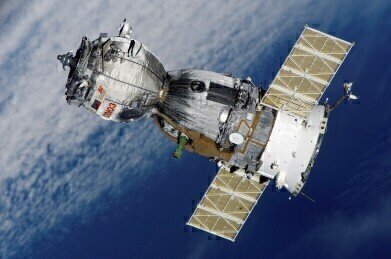News
What Happened to Japan's Troubled X-Ray Satellite?
May 11 2016
While it may not be on par with the USA and Russia, Japan is still a formidable player in the space exploration game. Yet despite ongoing progress the Japanese Space Agency (JAXA) has just suffered a major blow, announcing that recovery of its ASTRO-H X-ray astronomy satellite is now out of the question. Hitomi has been in an out of control orbit for several weeks, and the confirmation brings an end to ongoing uncertainty.
“JAXA expresses the deepest regret for the fact that we had to discontinue the operations of ASTRO-H and extends our most sincere apologies to everyone who has supported ASTRO-H believing in the excellent results ASTRO-H would bring,” announced the agency in a solemn statement.
A new focus on pinpointing the problem
In a newly released statement JAXA confirmed that its focus will now switch from attempting to restore communications, to determining what went wrong. “We will carefully review all phases from design, manufacturing, verification, and operations to identify the causes that may have led to this anomaly including background factors,” reads the statement.
Using telescopes to traverse outer space
Hitomi has been traversing the skies since February 17 2016, and is worth a cool US$286 million. A joint effort from JAXA, NASA and several other partners, the craft pioneered a new era of next generation space technology. Armed with a quartet of x-ray telescopes and two gamma-ray telescopes, its mission was to identify black holes, as well as reconnoitre the distant universe. Unfortunately, March 26 saw the mission go awry, with the satellite spinning uncontrollably as it sailed towards an outlying galaxy. Observations suggest that the craft may have lost some of its parts, with a human issued errant software command potentially to blame.
The future of satellite space exploration
So what’s next? Space scientists will have to wait 12 years for a similar mission to materialise, with the European Space Agency’s (ESA) ATHENA scheduled to launch in 2028. Needless to say, the ESA will be looking closely at where JAXA went wrong, and how to overcome identified issues.
As well as being used for space exploration, satellites play an important role in the agricultural industry. ‘Testing Wheat Grain Authenticity with Fast, Non-destructive Multispectral Image Analysis’ looks at how agriculturalists use satellite technology to uncover high-dimensional patterns that would otherwise remain unseen. The rich data offers a rapid, non-destructive approach that can be applied to a wide range of products, including food and raw ingredients.
Digital Edition
Lab Asia Dec 2025
December 2025
Chromatography Articles- Cutting-edge sample preparation tools help laboratories to stay ahead of the curveMass Spectrometry & Spectroscopy Articles- Unlocking the complexity of metabolomics: Pushi...
View all digital editions
Events
Jan 21 2026 Tokyo, Japan
Jan 28 2026 Tokyo, Japan
Jan 29 2026 New Delhi, India
Feb 07 2026 Boston, MA, USA
Asia Pharma Expo/Asia Lab Expo
Feb 12 2026 Dhaka, Bangladesh



















